Architecture is the Biggest Unwritten Document of History - Harihar Historic town
Read this post on TravelFeed.io for the best experience
Architecture is the Biggest Unwritten Document of History
Harihar Historic Town on the Banks of Twin Rivers - The Tunga and Bhadra

Harihar or Harihara
Harihar is a town located in Davanagere district of Karnataka India. The town is known for the famous historic temple of 12th century The Harihareshwara Temple. The town is also known as Dakshina Kashi too. The town is located on the banks of river Tunga Bhadra, a formed by twin rivers The Tunga and The Bhadra. The civilization of the river banks are always rich in agriculture and industries. Harihar was once known as Industrial hub of central Karnataka state. As the time passed by the biggest industry of Kirloskar brothers went down as brothers family disputes. The time (20 yrs. ago) was the worst times of Harihar as many were on streets and many left the town as they lost the jobs (Estimated to more than 15000 jobs). Now we have Aditya Birla's Grasim industries being operational, other industries Synthite, Shamanur Sugar's, Cargill are also operational. Few sugar mills went down too. The industrialization which was dependent on River water slowly shifted their base to bigger cities like Bengaluru and Hubli. Agriculture is rich even today and the whole surroundings of the river banks are well cultivated and are fertile. the major crop grown was Rice which needs more water. Now the slow shift has initiated towards the beetle nut cropping.
History of Harihar and Harihareshwara
The Hari-Hara is the Hindu deity formed by the combination of two powerful gods Hari (Vishnu) and Hara (Shiva). In 12th century the popular moments and clashes elevated the grouping of one god is powerful over other, led to the syncertic deity Harihareshwara. To symbolize the unity the temple was built on the banks of river Tunga Bhadra and named it as Harihareshwara temple.
Since then the civilization around the area coined the name Harihara
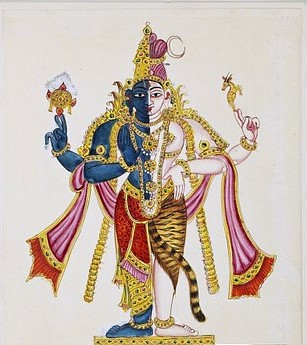
Source Vishnu (left half—blue) and Shiva (right half—white).
The Harihareshwara Temple was built in c. 1223–1224 CE by Polalva, a commander and minister of the Hoysala Empire King Vira Narasimha II. In 1268 CE, Soma, a commander of King Narasimha III of the same dynasty made some additions. The temple houses the deity Harihara, a fusion of the Hindu Gods Vishnu and Shiva. The image of the deity is a fusion of the right vertical half of Shiva and left vertical half of Vishnu. The image holds in its right hand, the attributes of Shiva and in the left hand, those of Vishnu.
Source
The temple is constructed in a staggered square mantapa (hall) plan, typical of Hoysala constructions. Therefore, the outer wall of the mantapa shows many projections and recesses. The wall of the mantapa is a parapet wall resting on which are half pillars that support the outer ends of the roof (cornice). The ceiling of the open mantapa is adorned with artistic decoration such as lotuses. The ceiling is supported by lathe turned full pillars. The material used for the temple is soapstone (also called pot stone). The original tower over the shrine (Vimana) is missing and has been replaced in modern times with one of brick and mortar. Preserved within the temple premises are several old-Kannada inscriptions and hero stones.
| Staggered square plan of open mantapa (hall) at the Harihareshwara temple |
|---|
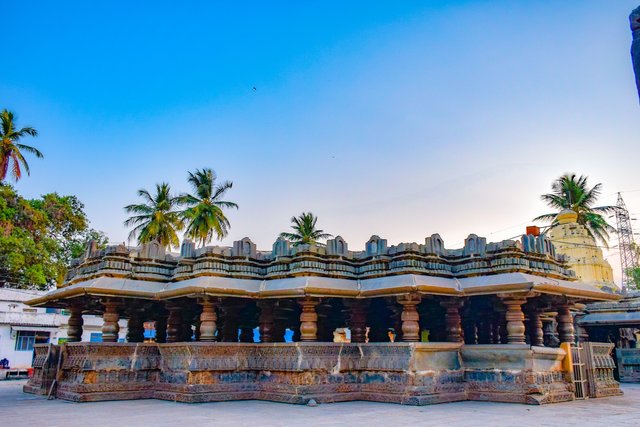 |
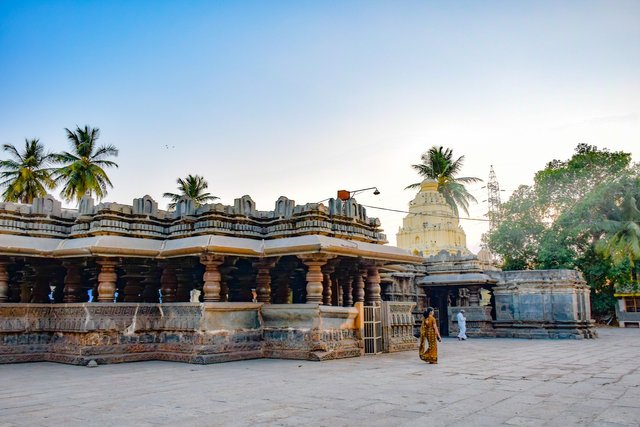 |
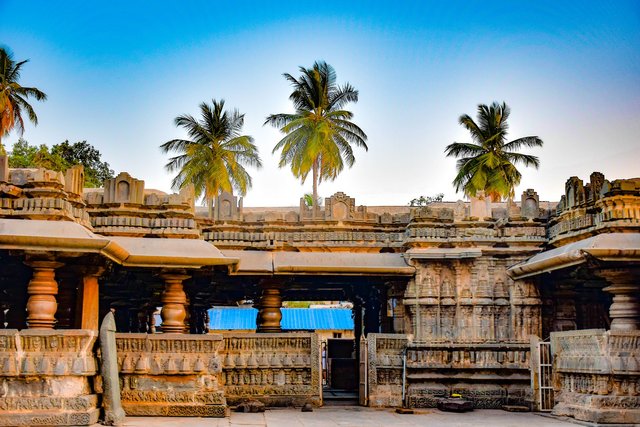 |
The lathe tuned Pillars are very unique and almost match the size and they are still super soft even after the big 800 yrs of weather phenomenon. Here the photographs of the pillars. These pillars support the staggered roof and make a beautiful open hall before the sanctum
| Lathe turned pillars | |
|---|---|
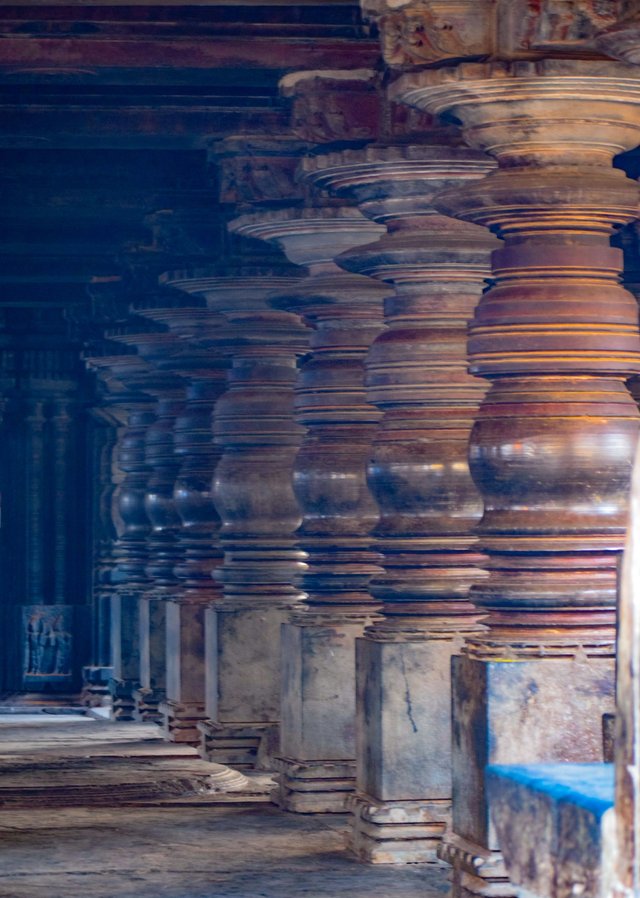 | 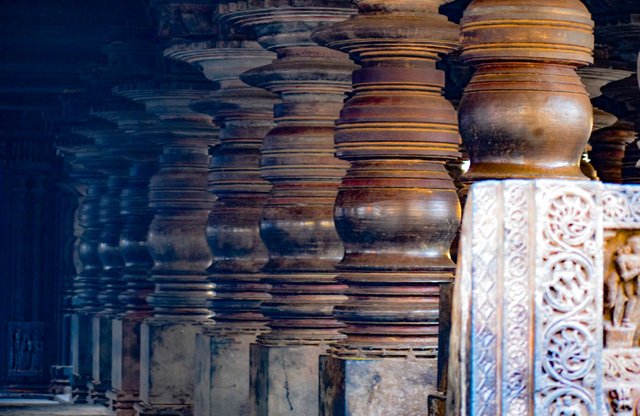 |
From my college days, my every evening with friends would be around this place and we use to have lot of fun, but talked very less of history and the contribution to our town.
I did not wanted to speak the history in my words, to make it appear real and reliable, i got the source from Wiki.
The photographs are my own work, here I share all of them with you
The Basava is on the outer side of the sanctum and is worshiped. It is believed that the after praying the deity the people come out and talk their wishes in the ears of Basava.
The first photograph also shows the sanctum which does not have the original in place, but later was built with bricks and modern stuffs.
| The Basava Carved in Stone |
|---|
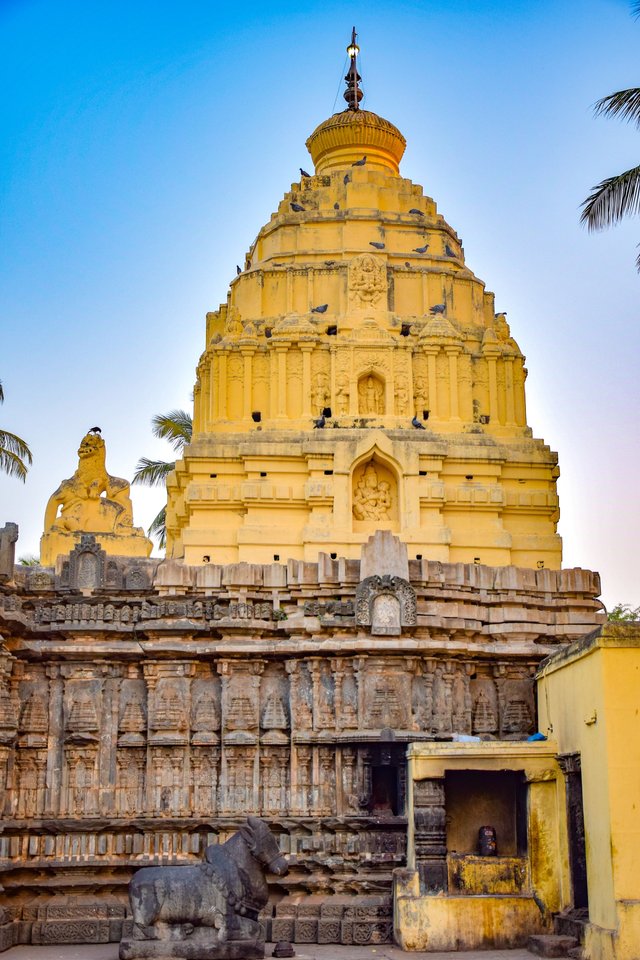 |
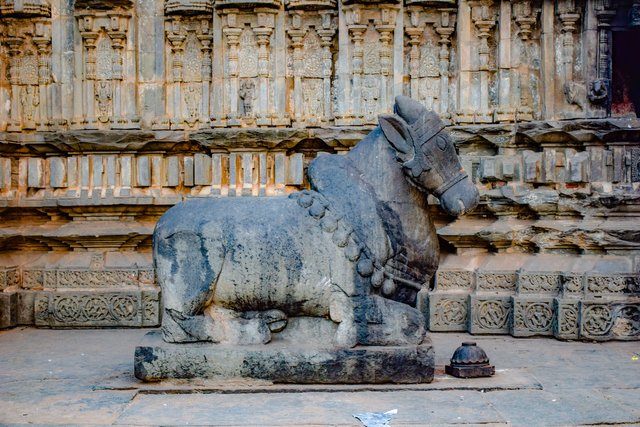 |
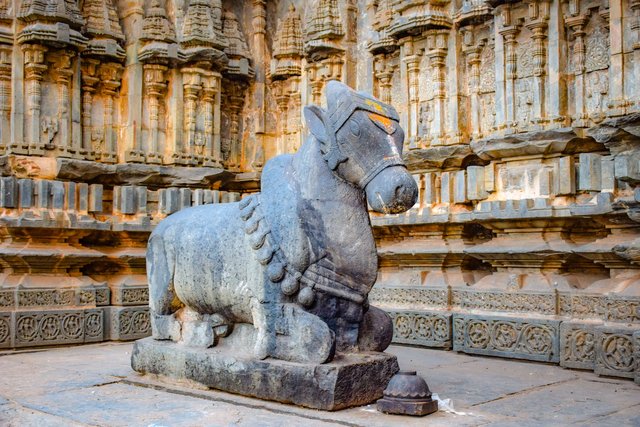 |
 |
How to Get there ?
Flight : the nearest airport seems to be Hubli and followed by Bengaluru.
Train : more than 20 trains travel between Hubli and Bengaluru passing through Harihar. So is the best and most preferred mode of transport.
By Road: Plenty of public transport is available and travel time is between 4 hrs. to 6 hrs. to cover 280 kms of which last 80 kms are under construction(likely to finish by 2021) and may take little extra time by road.
The train and bus stations are adjacent to each other. Easiest way is to take an auto rickshaw who should charge you 30 rupees and not more than that. the total distance from station to temple is less than 1.3 kms.
Hotels: All you have here are 3 star hotels and not used much. Most preferred hotels are from nearby city Davanagere which is 14 kms away.
| Close look of the Temple wall Designs and Carvings |
|---|
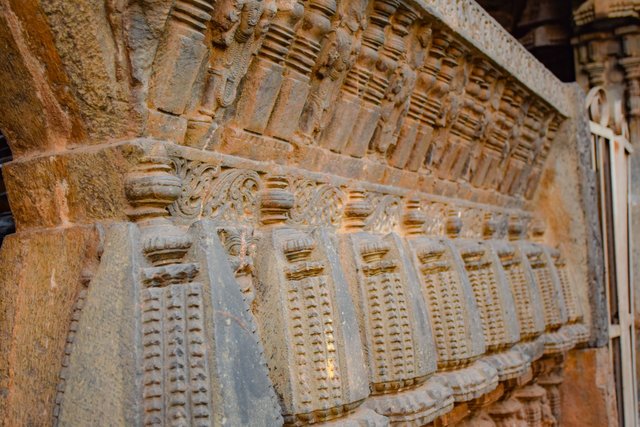 |
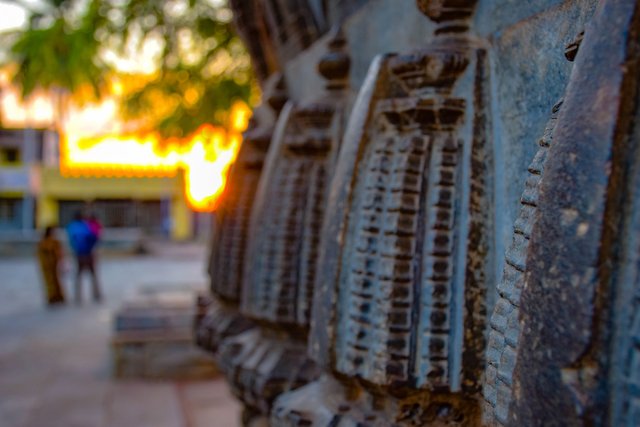 |
| Sanctum where the pooja is performed | |
|---|---|
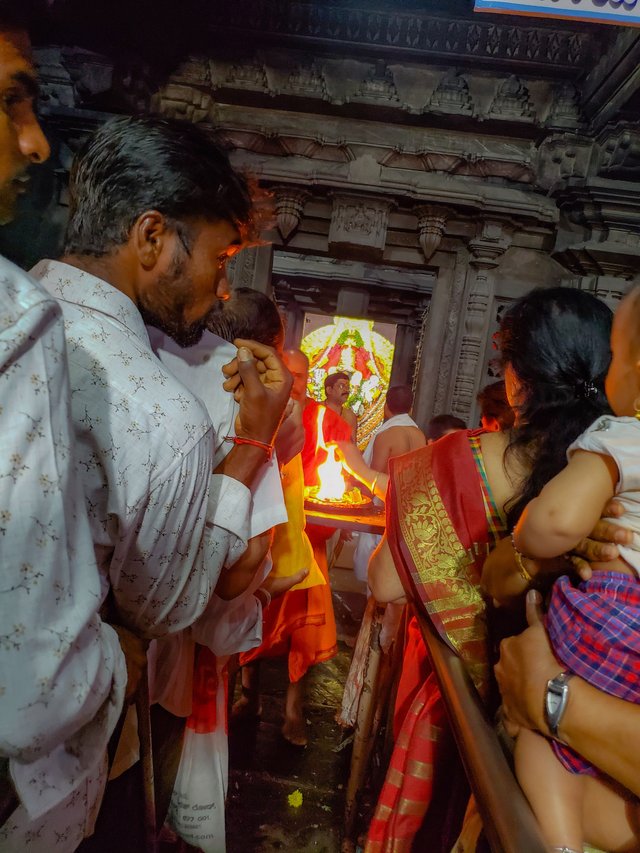 | 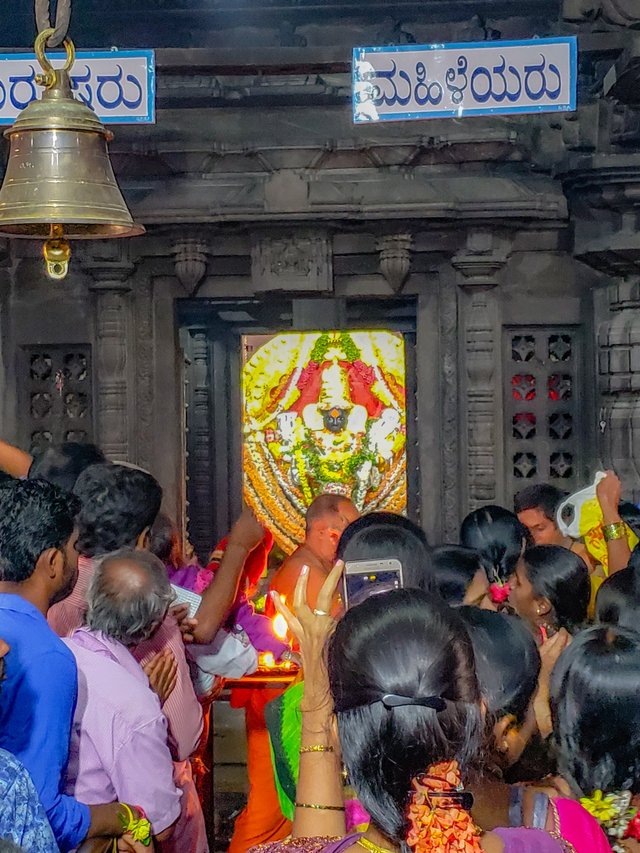 |
Best Time to visit ?
Every year Feb there will be Harihareshwara fair and the temple and the chariot will be decorated on full moon day of February.
Below photographs are from the open area of the temple where all the crowd can sit after the pooja. The temple premises has a Lakshmi temple in the same compound.

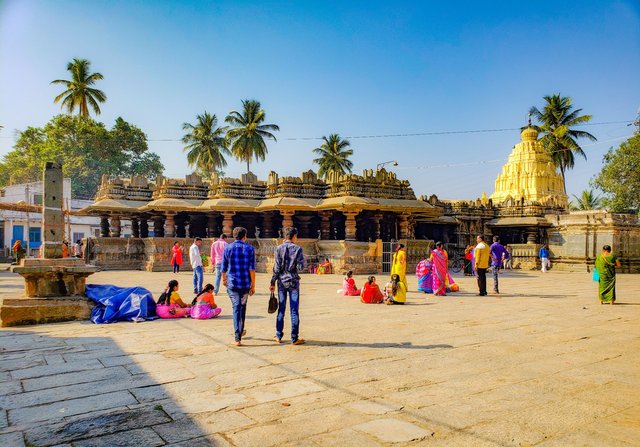
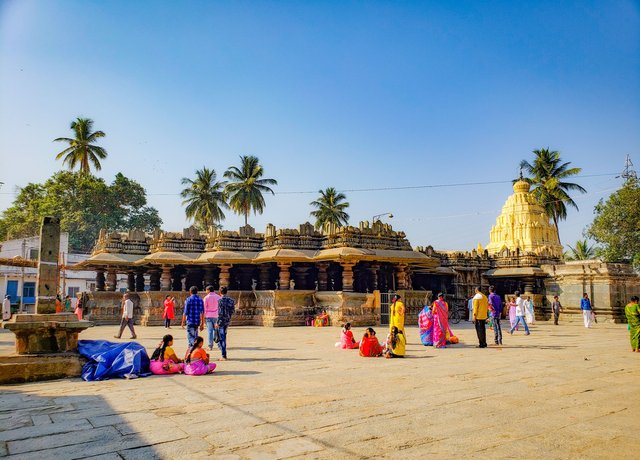
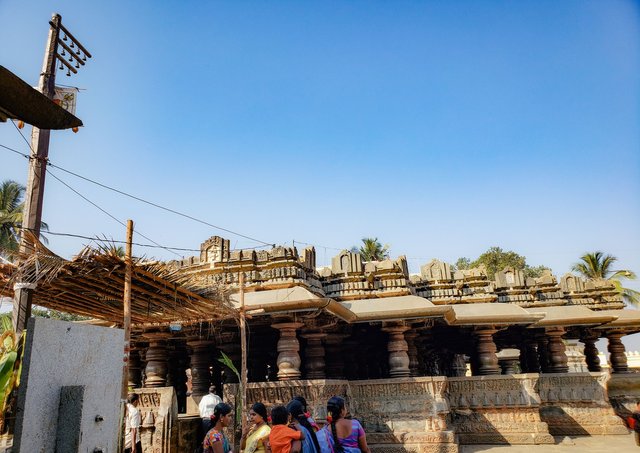
| Harihareshwara Ratha (chariot) |
|---|
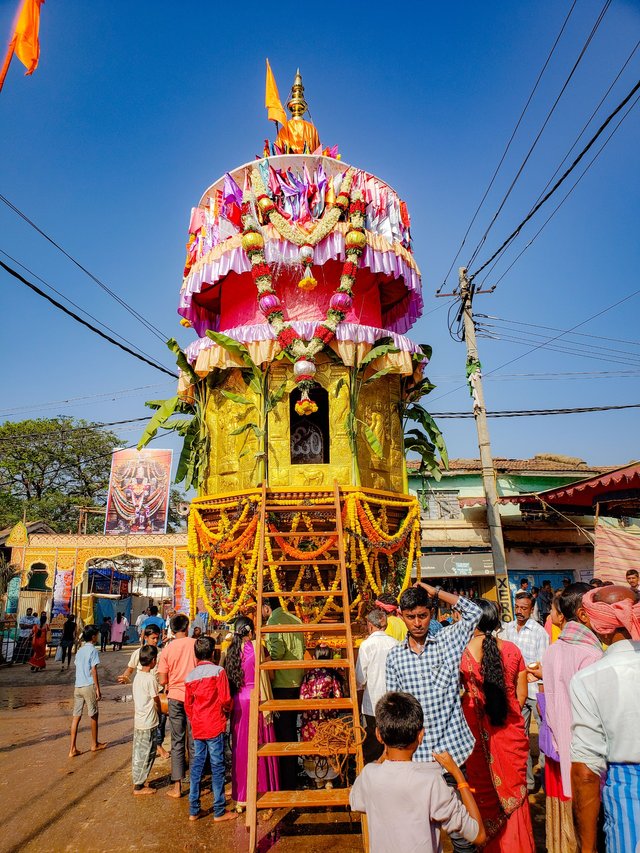 |
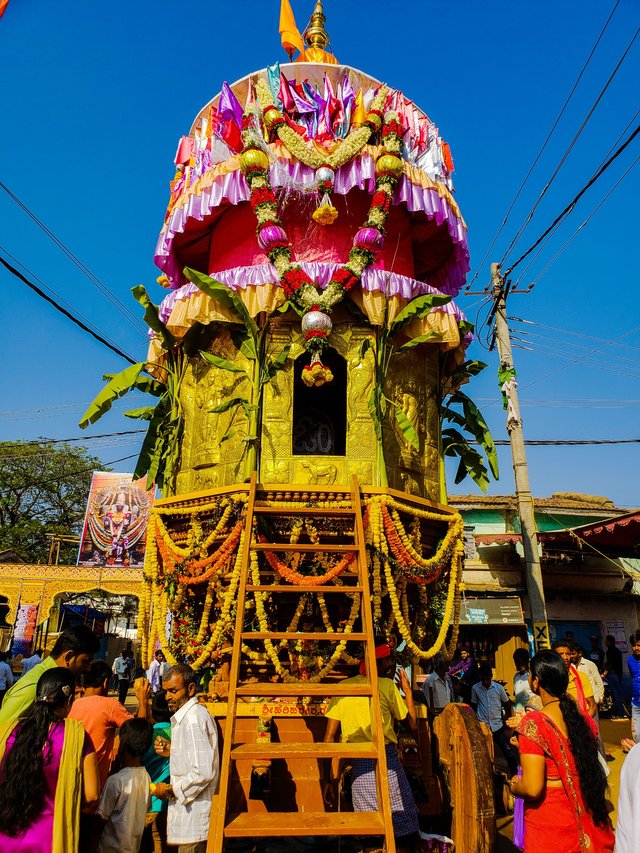 |
The week of the year will be a festival season for Harihar.
The whole of the nights will be lighted and the town will look colorful. Some of the colorful photographs for you.
| Gramadevate Temple at night |
|---|
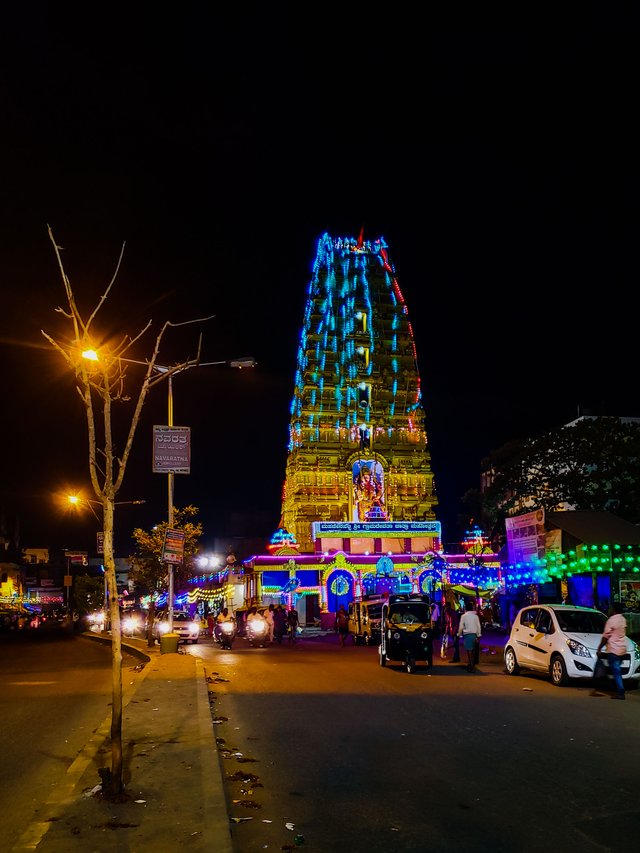 |
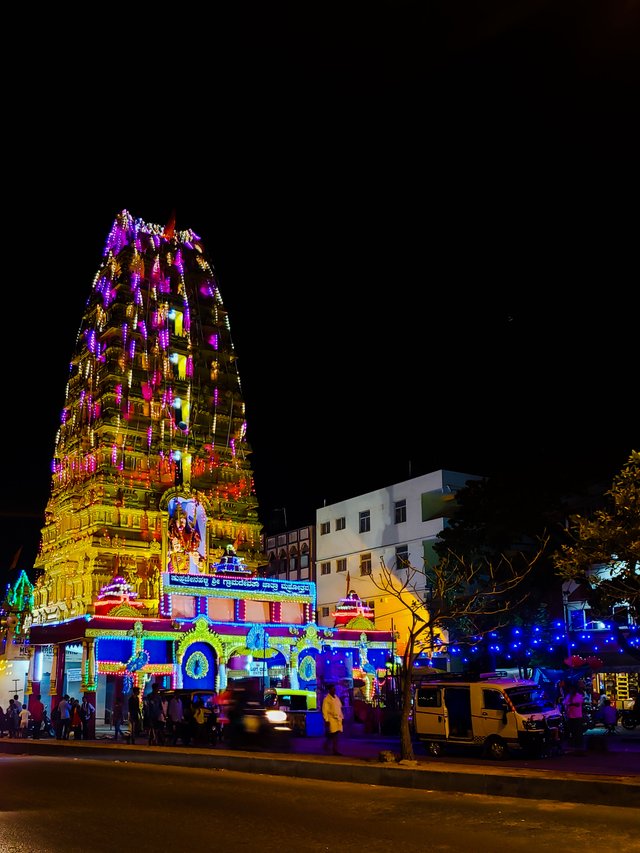 |
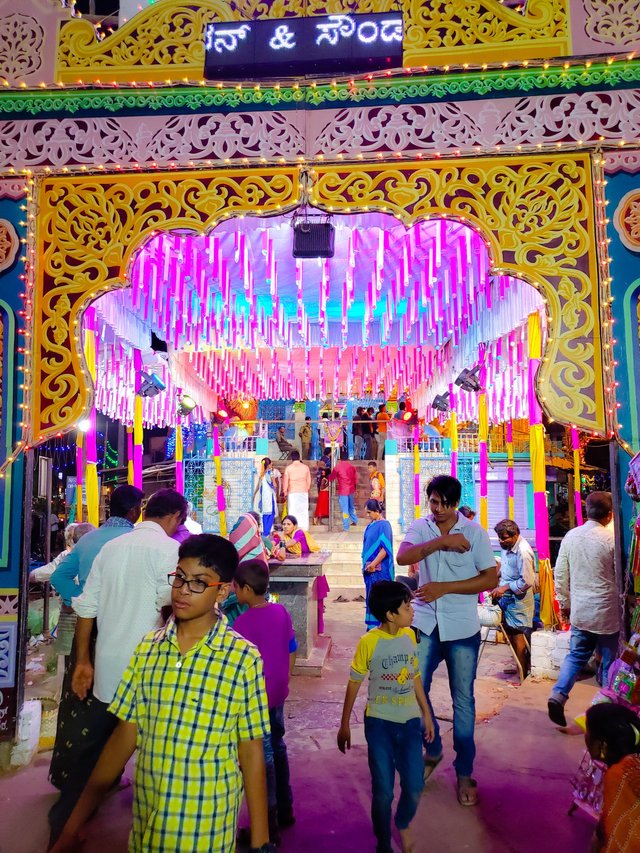 |
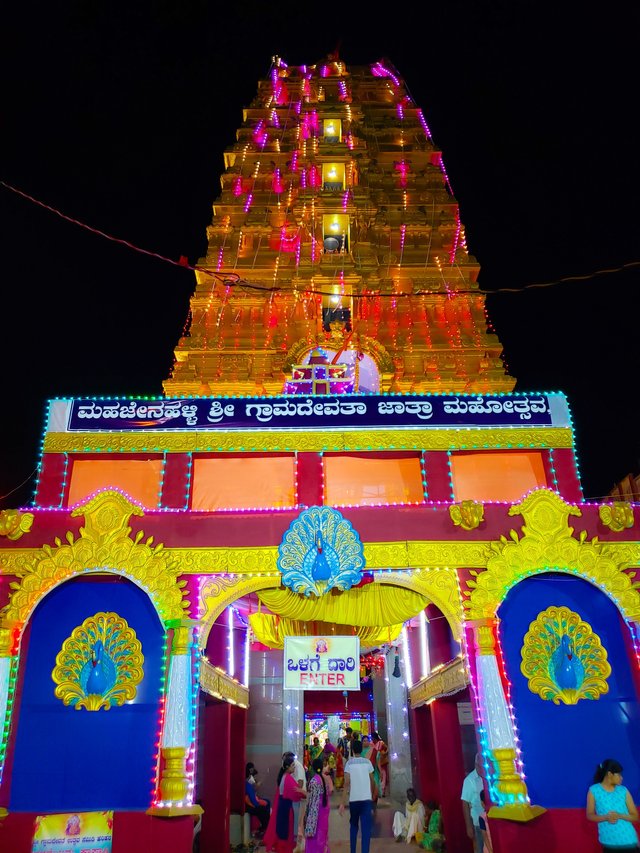 |
| Night Decorations at the entrance | |
|---|---|
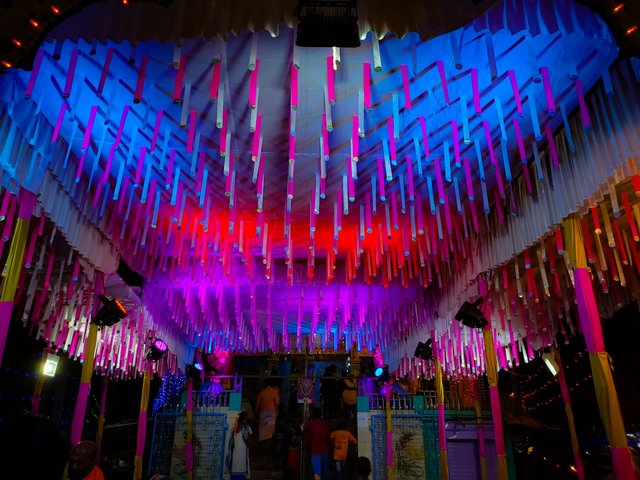 | 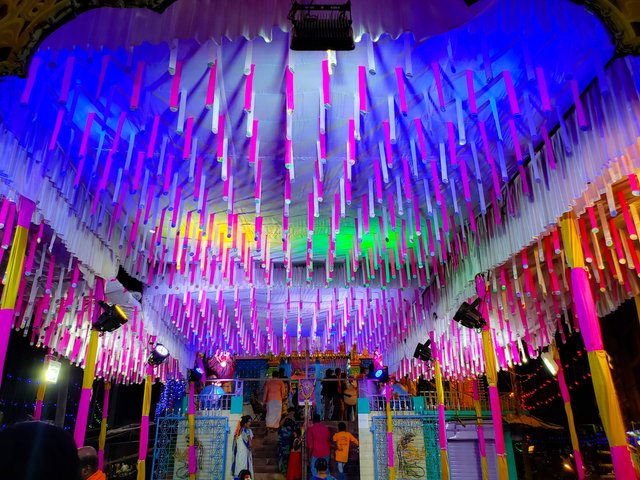 |
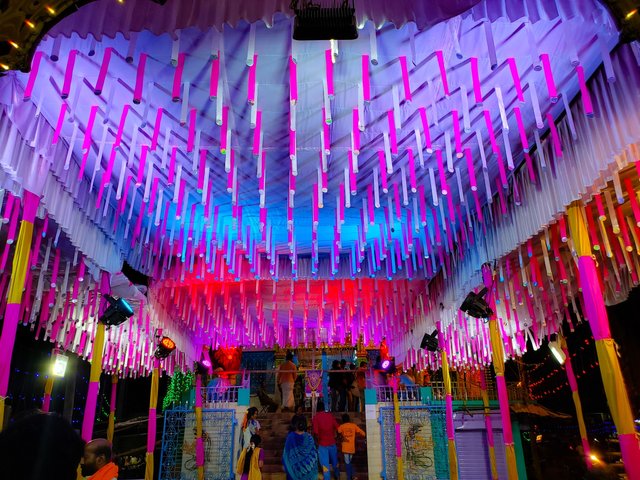 | 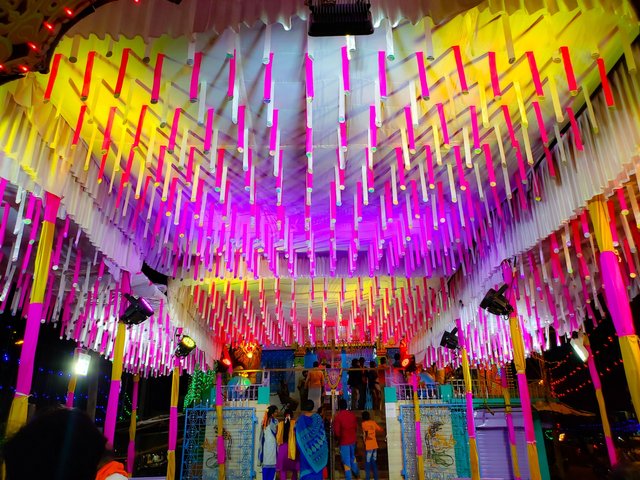 |
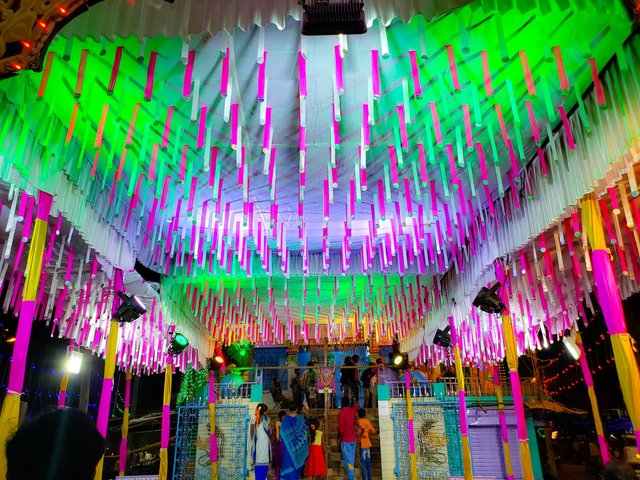 | 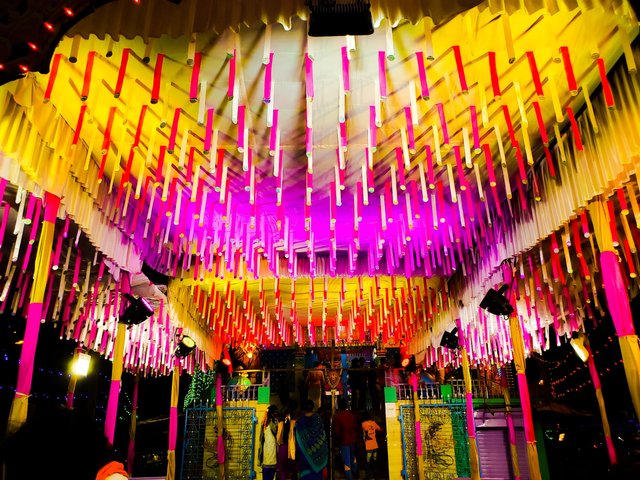 |
This was my time in Harihar and a small effort to take you around the history of harihareshwara temple and few other attractions. The town still has many attractions. Will take you through in part 2 of the post with vibrant photographs of the river side temples and recent art work.
Have a great day all
stay safe :)
Congratulations @pradeepdee6! You received the biggest smile and some love from TravelFeed! Keep up the amazing blog. 😍 Your post was also chosen as top pick of the day and is now featured on the TravelFeed.io front page.
Thanks for using TravelFeed!
@invisusmundi (TravelFeed team)
PS: Why not share your blog posts to your family and friends with the convenient sharing buttons on TravelFeed.io?